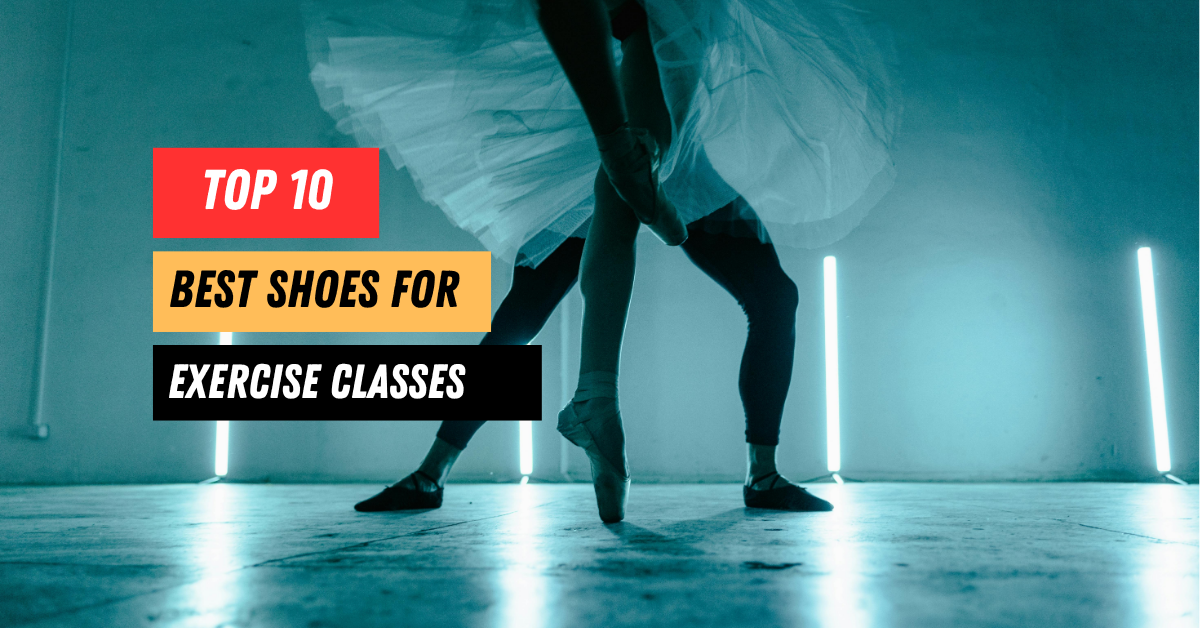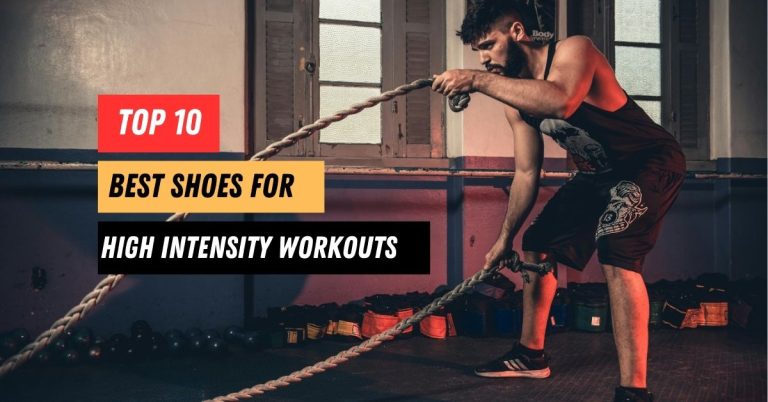Top 10 Best Shoes for Exercise Classes You NEED to Try
Choosing the right shoes for exercise classes is not just about style; it’s essential for enhancing performance and preventing injuries. Whether you’re engaging in high-intensity interval training, Zumba, or circuit training, the correct footwear can significantly impact your safety and effectiveness. Exercise shoes are designed to support your feet during various movements, providing the necessary stability, cushioning, and flexibility.
This selection process is crucial as the wrong pair can lead to discomfort, reduced performance, and even long-term health issues. This article will guide you through selecting the best shoes for your exercise classes, ensuring that you make an informed decision that combines comfort, durability, and style.
Top 10 Shoe Reviews for Exercise Classes
Finding the right shoes for your exercise classes can significantly enhance your performance and comfort. Here, we review the top five shoes that meet a variety of needs for different types of exercise classes.
1. Nike Free Metcon 3
The Nike Free Metcon 3 is an excellent choice for those who participate in a range of exercise classes. This shoe combines the flexibility and comfort of the Nike Free line with the strength and stability of the Metcon series. The upper is crafted from a lightweight mesh that offers superior breathability, while the midsole features a firm, yet responsive cushioning system.
The wide heel base provides enhanced stability for weightlifting, yet the shoe is flexible enough for sprints and agility work. The outsole has a robust grip that performs well on various surfaces, making it ideal for gym floors and soft mats alike.
Pros:
- Versatile design suitable for weightlifting and high-intensity training
- Lightweight and breathable mesh upper
- Stable heel for lifting and dynamic movements
Cons:
- May not be cushioned enough for long-distance running
- Higher price point
2. Reebok Nano X1
Known for its versatility, the Reebok Nano X1 excels across different types of workouts. It is often touted as the “Fitness Athlete’s Shoe” due to its all-encompassing capabilities. The Flexweave upper is both durable and breathable, ensuring a comfortable fit even during the most intense exercise classes.
The shoe’s comfort is further enhanced by a responsive foam cushioning that provides excellent energy return and support. The wide toe box allows for natural toe spread during high-impact moves, enhancing overall stability and balance. Additionally, the minimal drop outsole offers a solid foundation for lifting without sacrificing flexibility for cardio and agility workouts.
Pros:
- Excellent for versatile training needs
- Durable Flexweave upper
- Comfortable, responsive cushioning
Cons:
- May not provide enough arch support for those with specific foot needs
- Some users report sizing issues
3. Asics Gel-Fit Sana 4
The Asics Gel-Fit Sana 4 is a top choice for those who prioritize comfort and support in their workout shoes. It features Asics’ renowned GEL cushioning system that absorbs impact and reduces strain on feet and joints. The flexible fit system adapts to the contours of your foot, providing a secure fit without restricting movement.
The mesh upper is soft and seamless, which reduces the risk of irritation and allows for optimal airflow. This shoe is particularly well-suited for studio classes where floor work and high flexibility are required. The lightweight design and grippy outsole make it easy to move smoothly across different surfaces.
Pros:
- GEL cushioning system for superior comfort
- Flexible and adaptive fit
- Lightweight and breathable design
Cons:
- Not ideal for outdoor use
- Limited color options
4. Adidas CrazyTrain Elite
The Adidas CrazyTrain Elite stands out with its Boost technology, which offers unmatched energy return, making it perfect for explosive workouts. The tightly woven textile upper provides durability and support, while the TPU bar for stability during lateral movements is a game changer.
The shoe’s design ensures it stays snug and comfortable, even during the most rigorous exercises. The multi-surface outsole grips well on both dry and slick surfaces, enhancing safety during workouts. It’s a solid choice for those who engage in varied, high-intensity workouts and need a shoe that can keep up.
Pros:
- Boost technology for excellent energy return
- Durable and supportive upper
- Great grip on multiple surfaces
Cons:
- Can feel heavy compared to other models
- Price may be a barrier for some
5. Under Armour HOVR Rise 2
The Under Armour HOVR Rise 2 is engineered for those who need a high-performance shoe that keeps up with vigorous workout demands. It features UA HOVR technology that provides a ‘zero gravity feel’ to maintain energy return that helps eliminate impact. The mesh upper is abrasion-resistant and adds to the shoe’s overall durability.
Its mid-foot strap offers additional support and keeps the foot secure during all types of movements. The outsole’s unique traction pattern ensures solid footing for agility movements and high-impact workouts, making it highly effective for a variety of exercise classes.
Pros:
- HOVR technology for comfort and energy return
- Durable, abrasion-resistant upper
- Excellent support and foot security
Cons:
- Some might find the design bulky
- Limited flexibility compared to other models
6. Puma Tazon 6 FM
The Puma Tazon 6 FM is celebrated for its sleek, streamlined design and robust performance features, making it an ideal choice for a variety of exercise classes. The synthetic leather upper provides durability while maintaining a lightweight feel. It features a midfoot saddle for optimum fit and comfort, along with an EVA heel pod that offers cushioning and shock absorption.
The TPU shank enhances the shoe’s stability, which is crucial during intense workouts. Additionally, its rubber outsole delivers excellent traction and durability on different surfaces. The Tazon 6 FM combines aesthetics with functionality, delivering an all-round performance shoe.
Pros:
- Stylish, durable synthetic leather upper
- Good stability with TPU shank
- Excellent traction on various surfaces
Cons:
- Not as breathable as other models
- Some users find the fit a bit narrow
7. Nike ZoomX SuperRep Surge
Nike’s ZoomX SuperRep Surge is designed for endurance class workouts, offering responsive cushioning with its ZoomX foam the same material used in Nike’s elite marathon shoes. This shoe excels in scenarios where cushioning and responsiveness are crucial. The lightweight mesh upper ensures breathability, while the rower clip at the heel adds versatility for machine-based workouts.
Its supportive arc on the side helps stabilize the foot during side-to-side movements, making it perfect for a variety of training activities. Its innovative design and cushioning make it a top choice for those who need high energy return during prolonged workouts.
Pros:
- High-level responsive cushioning with ZoomX foam
- Breathable mesh upper
- Versatile for machine-based and floor workouts
Cons:
- Premium price point
- May not provide enough support for heavier weights
8. Brooks Glycerin GTS 19
Brooks Glycerin GTS 19 is known for its plush comfort and exceptional support, making it suitable for fitness enthusiasts who value long-lasting comfort in their workout shoes. It features GuideRails support technology that keeps excess movement in check, which is excellent for protecting the knees during high-impact classes.
The DNA LOFT cushioning offers a soft feel without compromising responsiveness or durability. The engineered mesh upper and the 3D Fit Print technology ensure a secure, breathable fit that adapts to the foot’s movements. It’s an ideal choice for those seeking both comfort and moderate stability in their exercise footwear.
Pros:
- Exceptional comfort and cushioning
- GuideRails support for motion control
- Durable and responsive
Cons:
- Some may find them too cushioned for certain types of training
- Higher price bracket
9. New Balance Minimus 20 V7
The New Balance Minimus 20 V7 is a minimalist shoe that offers a near barefoot experience, ideal for those who prefer a natural feel during their workouts. The updated knit upper provides enhanced comfort and flexibility, while the Vibram outsole ensures excellent traction and durability.
The REVlite midsole offers lightweight cushioning, which makes the shoe versatile enough for both indoor and outdoor activities. Its low profile and minimal drop are perfect for maintaining a strong connection with the ground, essential for stability during various exercises.
Pros:
- Lightweight and flexible
- Excellent ground connection for stability
- Durable Vibram outsole
Cons:
- Minimalist design not suitable for all users
- Limited arch support
10. Under Armour Charged Commit 2
The Under Armour Charged Commit 2 is designed for comfort and versatility, featuring Charged Cushioning midsole for responsive and durable padding. The leather mid-foot saddle provides an adjustable fit, enhancing stability and support. Its mesh upper allows for breathability, and the rubber outsole provides reliable traction.
This shoe is well-suited for a range of workouts, from strength training to cardio classes, providing a balanced mix of cushioning, support, and durability.
Pros:
- Responsive Charged Cushioning
- Adjustable fit and good stability
- Suitable for a variety of workouts
Cons:
- May feel bulky to some users
- Not the most lightweight option
Buyer’s Guide
Selecting the ideal shoes for exercise classes involves understanding the specific requirements of your workouts and the unique features of exercise footwear. Here’s how to choose wisely:
1. Durability
Durability is key when selecting shoes for exercise classes. Look for shoes made with high-quality materials that can withstand the rigors of frequent workouts. Features such as reinforced stitching, robust outsoles, and abrasion-resistant uppers are indicators of a durable shoe. These elements ensure that the shoes will hold up under stress and continue to provide support and comfort over time.
2. Grip
The grip of your shoes is crucial, especially in classes that involve a lot of lateral movements, turns, or fast-paced activities. A good grip helps prevent slipping and injuries, providing stability on various surfaces, whether it’s a smooth dance floor or a rubber gym mat. Look for outsoles designed with strategic tread patterns or made from materials that enhance traction.
3. Comfort
Comfort is paramount, as uncomfortable shoes can distract you during exercise and even cause injuries. Look for shoes with adequate cushioning in the midsole, which absorbs impact and reduces stress on joints. The fit of the shoe is also essential; it should be snug but not tight, with enough room to wiggle your toes. Breathable materials like mesh can help keep your feet cool and reduce moisture build-up.
4. Material
The material of the shoes affects both comfort and performance. Breathable materials like mesh or lightweight synthetic fabrics are preferable as they allow for proper ventilation, keeping your feet dry and comfortable. Additionally, materials that offer flexibility while maintaining structure are ideal for exercise classes that require a wide range of movements.
5. Arch Support
Proper arch support is crucial, especially if you have specific foot conditions such as flat feet or high arches. Shoes with appropriate arch support can prevent overpronation or supination, thus reducing the risk of injuries. It’s important to know your foot type and choose a shoe that offers the necessary support.
6. Adaptability
Lastly, consider the adaptability of the shoe to various types of exercise classes. While some shoes are specialized for specific activities, others are more versatile and can be used across different types of workouts. This can be a cost-effective option if you participate in multiple exercise formats.
FAQ
Q1: What makes exercise class shoes different from regular sneakers?
Exercise class shoes are designed to handle the demands of specific movements involved in class workouts. They often have enhanced support, superior grip, and are built to provide the stability and flexibility needed for dynamic movements, unlike regular sneakers which may be designed more for casual wear or simple jogging.
Q2: How often should I replace my exercise shoes?
Replace your exercise shoes approximately every 6 to 12 months, depending on the frequency and intensity of your workouts. Signs of wear like diminished cushioning and deteriorating grip are indicators that it’s time for a new pair.
Q3: Can I wear running shoes for exercise classes? While running shoes provide cushioning and support, they are specifically designed for forward motion and may not provide the lateral support needed for many exercise classes. It’s best to choose shoes designed for multi-directional movement.
Q4: What are the signs of a well-fitting exercise shoe?
A well-fitting exercise shoe should feel snug but not tight, offer enough room to wiggle your toes, and not slip at the heel. Ensure there’s about a thumb’s width of space between the front of the shoe and your longest toe.
Q5: Are lighter shoes better for exercise classes?
Lighter shoes can enhance comfort and flexibility during workouts. However, they should still provide enough support and cushioning to protect against impact and support foot health.
Q6: What features should I look for if I have flat feet?
If you have flat feet, look for shoes with enhanced arch support and stability. Shoes with a structured arch and firm midsoles can help control excessive pronation.
Q7: How do I maintain my exercise shoes?
Keep your exercise shoes clean and dry. Remove any dirt or debris after each class, and if they’re wet, let them air dry away from direct heat. Use a soft brush or cloth for cleaning, and avoid machine washing unless specified by the manufacturer. Proper maintenance extends the life of your shoes and maintains their performance characteristics.
Conclusion
Choosing the right shoes for exercise classes is crucial for ensuring safety and enhancing functionality. The appropriate footwear supports performance, provides necessary stability, and helps prevent injuries. Selecting shoes that align with your specific workout needs can significantly improve your overall fitness experience, making each session more effective and enjoyable.







